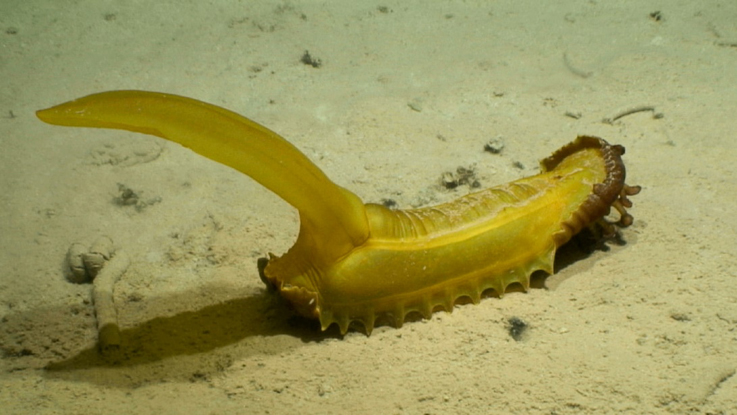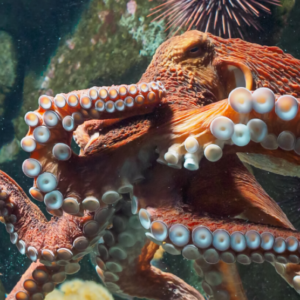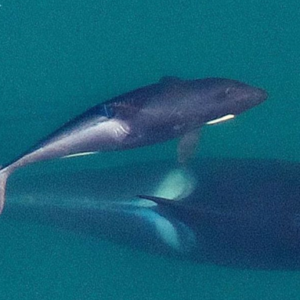Deepsea: Meet the Gummy Squirrel
Lots of strange and wonderful animals inhabit the deep sea off the coast of British Columbia. Few are as strange as the Psychropotes longicauda, a species of sea cucumber nicknamed the “Gummy Squirrel” for its tail-like appendage and soft looking body.
Learn more about this ocean “squirrel” and sign our petition to convince the federal government to make the Pacific Deepsea Oasis a full Marine Protected Area so wildlife and their habitats in the ocean can be protected.
Vital Signs
Common name: Gummy Squirrel
Latin name: Psychropotes longicauda
Range: Atlantic, Southern, Indian and Pacific Oceans; occurs beneath 3,000 meters depth
Life Span: unknown
Size: up to 80 cm including the tail

Ocean Networks Canada
Facts
- Bright yellow with a red underbelly and a large tail held aloft, the gummy squirrel resembles fewother creatures on land and sea.
- Although it was given its common name due to its resemblance to the land-dwelling furry mammal, it is speculated to use its tail for a completely different purpose. Scientists believe that the gummy squirrel’s tail may be used as a sail to hitch a ride on deep ocean currents in order to move better-feeding grounds on the seafloor.
- To ingest particles of phytoplankton waste that have drifted to the sea floor from the surface, it will use its 18 feeding palps (similar to lips).
- Its bright yellow colour may be another unique adaptation for survival, designed to deter seafloor predators such as rattail fish by indicating the presence of a poisonous chemical.
- To reproduce, they produce one of the largest eggs among echinoderms with a diameter of 4.5 mm.
- The large eggs are quite buoyant, allowing for the potential of gene flow over large distances while being nourished by the nutrient-rich yolk.
- The juvenile individuals are found in the abyssopelagic (think very, very deep – below 2000 metres) region of the ocean where they grow to a length of five centimeters prior to settling onto the sea floor.
- Like many deep sea creatures, relatively little is known about the gummy squirrel. This lack of knowledge is due both to the scarcity of fresh specimens and a limited range of specimens available to researchers.
- However, researchers do believe that they can identify two distinct subspecies: one in the Atlantic and the other in the northeast Pacific.
What can you do to help the Gummy Squirrel?
Because it’s habitat is in the deep sea, scientists are still learning about this strange creature and its lifespan.
To maintain the health of the oceans, and animals like sea cucumbers, it’s important we set aside large areas of the ocean for conservation and research. Sign our petition asking the federal government to make the Deepsea Oasis a Marine Protected Area.



